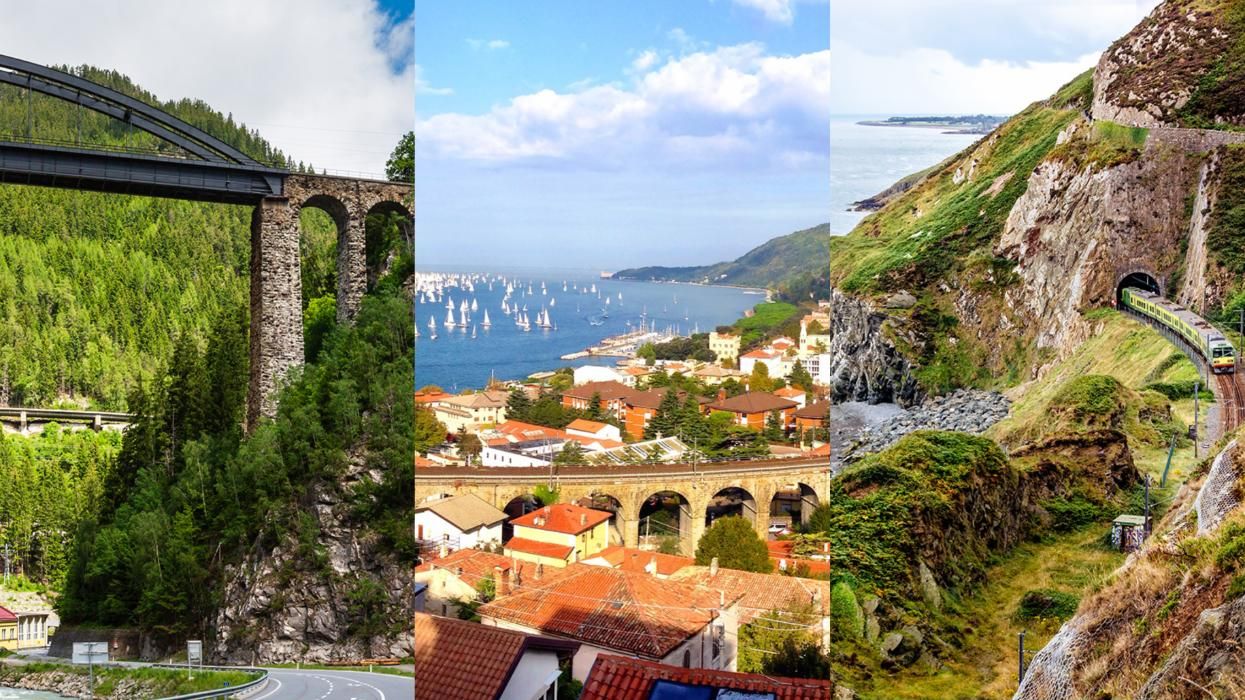All Rights reserved
By continuing to use our site, you agree to our Privacy Policy and Terms of Use.
By Ben Jones, CNN
(CNN) –Europe is renowned for its subsidized rail networks. From the historic Orient Express of Agatha Christie fame to the Eurostar traveling up to 186 mile-per-hour through the Chunnel, the continent has an array of options available for those seeking a vacation on the rails. Simply sit back at a picture window, drink or book in hand, as the spectacular scenery passes by outside your window.
To help you choose your route, here are 10 of Europe’s most underrated scenic train routes for 2023.
Trondheim to Bodø – Norway
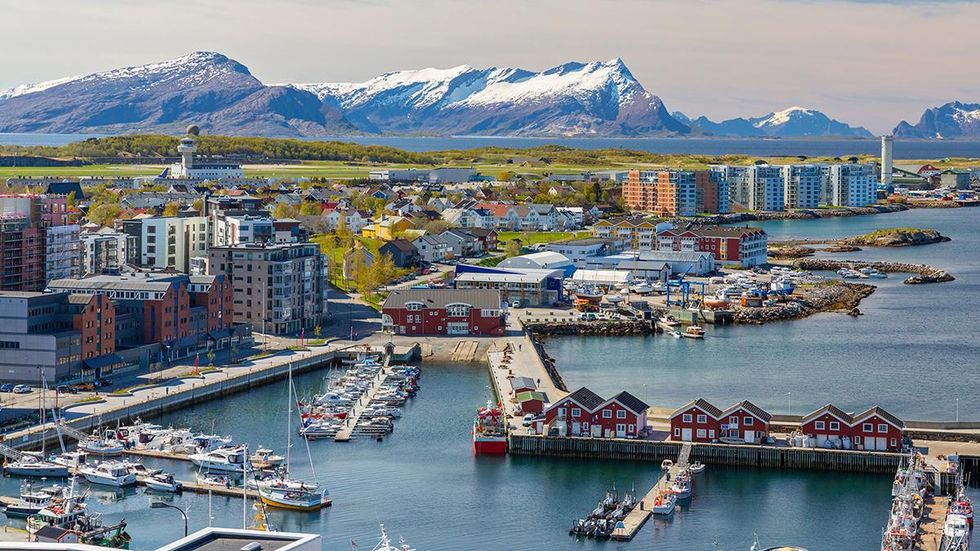
Bodø, Norway
PHOTO BY DMITRY PISTROV/ADOBE STOCK
Few train journeys can boast a visit to Hell and a crossing of the Arctic Circle, but Norway’s wonderful Nordlands Railway is exceptional by any measure. Running for 452 miles from Trondheim to Bodø, this is the longest and most isolated railway in Norway, traversing deep valleys, high mountain plateaus, and skirting countless lakes and fjords on its epic 10-hour journey north.
Just two trains a day make the full trip – choose the daytime one to make the most of the views, though there’s also a comfortable sleeper train connecting with trains to and from Oslo for the way back. Trains are now operated by SJ Nord, a division of Swedish State Railways.
Construction of the railway proceeded at a glacial pace from 1882 until 1940 when occupying Nazi forces pushed it forwards. Even so, the full route to Bodø was not completed until February 1962, 80 years after the first section from Trondheim to Hell (half an hour east of the city) welcomed its first passengers.
It remains a challenging route to maintain but provides a vital lifeline for the sparsely populated regions it serves, especially in winter. If you’re heading even further north, to Narvik and Tromsø, buses connect with trains at Fauske, taking a spectacular route through rugged mountain landscapes and over countless fjords.
While the Oslo-Bergen railway steals most of the limelight, there's much more to see in Norway and most journeys will deliver memorable scenery – not least the underrated Nordlands Railway.
Inverness to Kyle of Lochalsh – Scotland
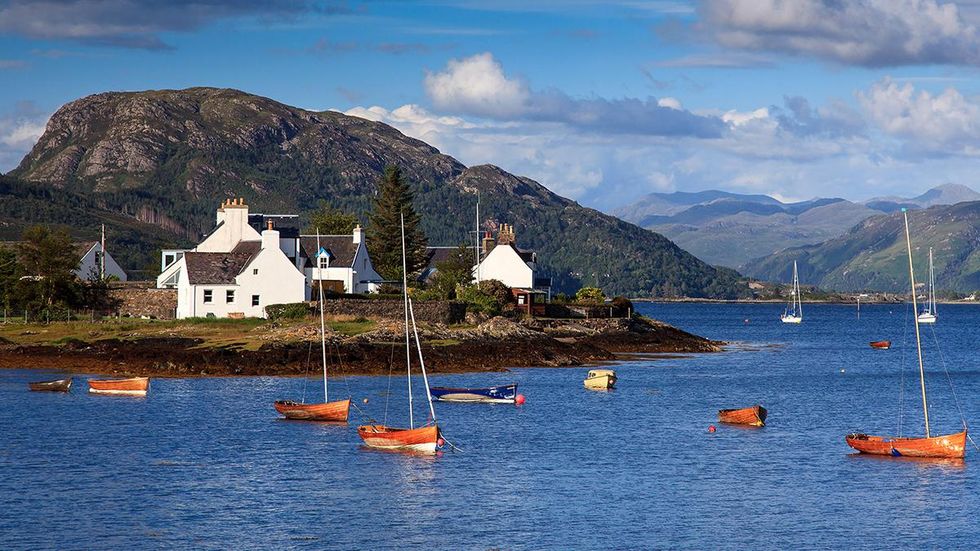
Inverness, Scotland
PHOTO BY KORKEAKOSKI/ADOBE STOCK
Scotland is blessed with some of Europe’s finest scenic rail journeys; the West Highland Line from Glasgow to Mallaig has frequently been voted as the world’s best trip, but further north is another strong contender for that title.
Spectacular rail lines radiate in three directions from Inverness, in the Scottish Highlands: south to Glasgow, north to Thurso (the most northerly point on the UK rail system), and – our pick – west to the little port of Kyle of Lochalsh, gateway to the rugged island of Skye.
Running for 80 miles and taking two hours and 40 minutes, the ScotRail train climbs over wild moorland (look out for herds of deer) with views of the Torridon Peaks further north before descending to skirt the shores of Loch Carron. Consider a stopover at the beautiful lochside village of Plockton, location of the BBC drama series Hamish Macbeth and parts of the notorious 1973 movie The Wicker Man. You might not expect to see palm trees this far north, but thanks to the warming winds of the Gulf Stream, Plockton enjoys an unusually mild climate.
Although passenger facilities on the little diesel train are fairly basic, you’ll be too busy soaking up the views to notice. The last few miles to the quayside terminus are unforgettable. Exceptional views over Loch Carron and Loch Alsh to the Cuillin Mountains on Skye beckon you to continue (by bus, unfortunately) to the hillwalking paradise of Skye or visit nearby Eilean Donan Castle in Dornie, another instantly recognizable TV and film location.
Belgrade to Bar – Serbia and Montenegro
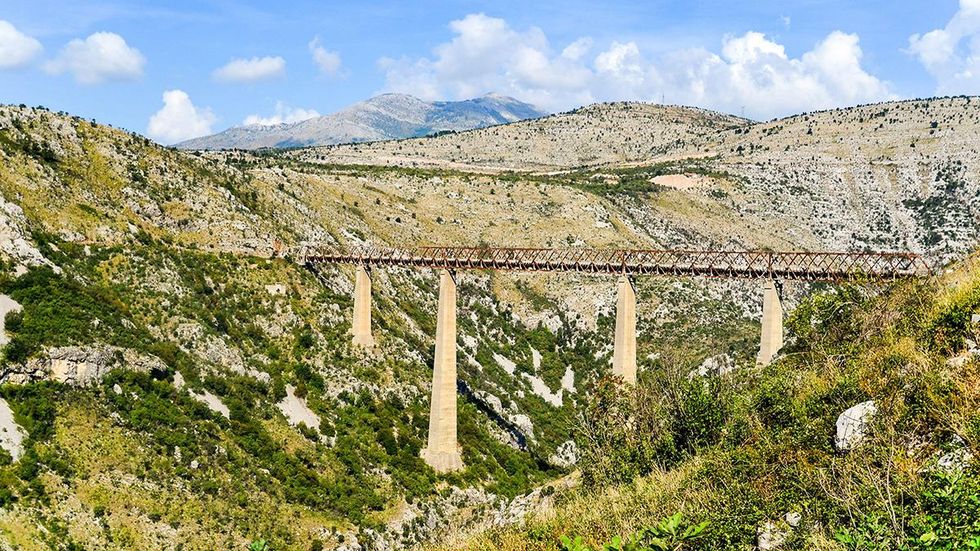
Mala Rijeka Viaduct, Montenegro
PHOTO BY JBDODANE/ALAMY STOCK PHOTO
If you’re seeking epic feats of civil engineering, head to the Balkans for one of Europe’s most spectacular rail journeys. Two trains a day link the Serbian capital, Belgrade, with the Adriatic port of Bar in neighboring Montenegro. The 296-mile, 11-hour route is a marvel of 20th-century engineering with 254 tunnels and 435 bridges, including what was – until 2001 – the world’s highest railway bridge. Initiated by dictator Marshal Tito in the early 1950s, construction of the line was so difficult that trains couldn’t make the full journey until 1976.
Although Serbia and Montenegro are largely overlooked by visitors to Europe, the Belgrade-Bar train is becoming increasingly popular with international tourists using Interrail or Eurail travel passes. But even without a pass, the 11-hour trip can cost as little as €21 ($21) one way. It’s a favorite of rail travel expert Mark Smith, better known as “The Man in Seat 61,” who rates it “amongst the best €21 you'll ever spend.”
The best of the scenery is in Montenegro, between Bijelo Polje and Bar, where you’ll find the 660-foot-high Mala Rijeka viaduct. Grab a seat on the right-hand side of the train for the best views.
Unfortunately, while the “Tara” daytime train ran daily before the pandemic, its 2023 dates are from June 17 to September 17. However, the best views can still be enjoyed from the “Lovcen” overnight train if you travel during the summer.
Zürich to Innsbruck – Switzerland and Austria
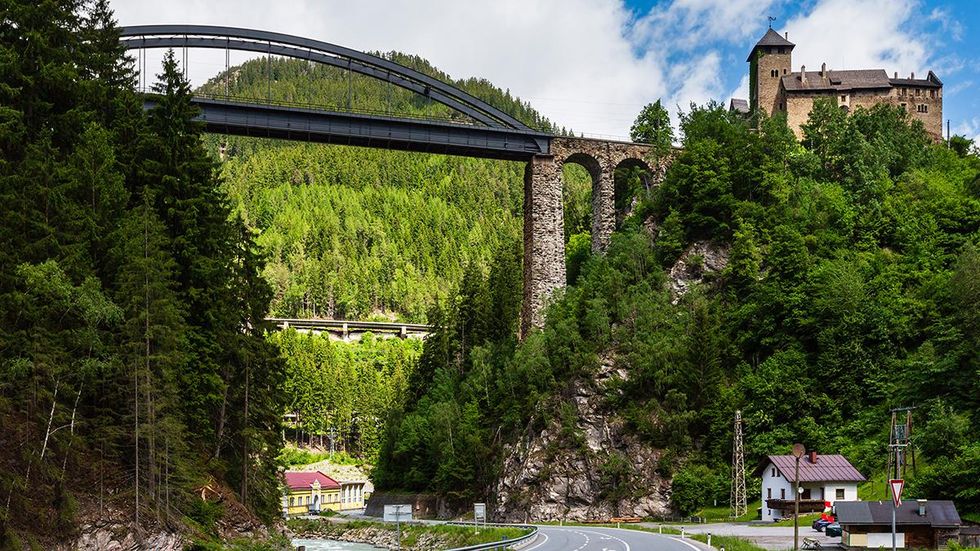
Trisanna Bridge, Switzerland
PHOTO BY WILDMAN/ADOBE STOCK
Several train types run between Switzerland and Austria, all equally comfortable, but this is the best looking: the once-daily, EuroCity Transalpin train from Zürich to Graz, which includes a fabulous Swiss panorama car for First Class passengers. The first part of the journey, from Zürich to Innsbruck, is the one you want.
This winding west-east journey, which takes 3.5 hours, follows one of Europe’s oldest trade routes, the Arlberg Pass. Unlike many other major Alpine railways, the Arlberg line has not been bypassed, nor are there any plans to do so. It remains largely unmodernized – and that’s part of its charm.
Sharp curves and countless tunnels hacked out of the Alpine rock by 19th-century laborers abound as the single track clings to narrow ledges, climbing steeply from both directions to the summit tunnel at 4,300 feet – one of the highest major railways in Europe.
Unsurprisingly, the 84-mile mountain section has always been difficult to keep clear – avalanches, rockfalls, mudslides, and floods present a constant threat and closures are far from unknown. Prior to electrification in 1924, staff and passengers also had to endure the suffocating effects of steam locomotives working flat out through the many tunnels. It’s far more pleasant with air conditioning!
The highlight of the journey is Austria’s slender Trisanna Bridge, which soars 390 feet across a deep gorge near Landeck, overlooked by the fairytale Wiesberg Castle. But there’s far more to the trip than this fleeting glimpse. From the shores of Lake Zürich and the Walensee in Switzerland to the rugged snow-capped Alps and the last leg through the wide valley of the Inn river, it’s a truly memorable experience that captivates even the most jaded of travelers. And don’t worry if you can’t make the Transalpin – they may not all have panoramic cars, but every Zürich to Innsbruck train takes this route.
Dublin to Wexford – Ireland
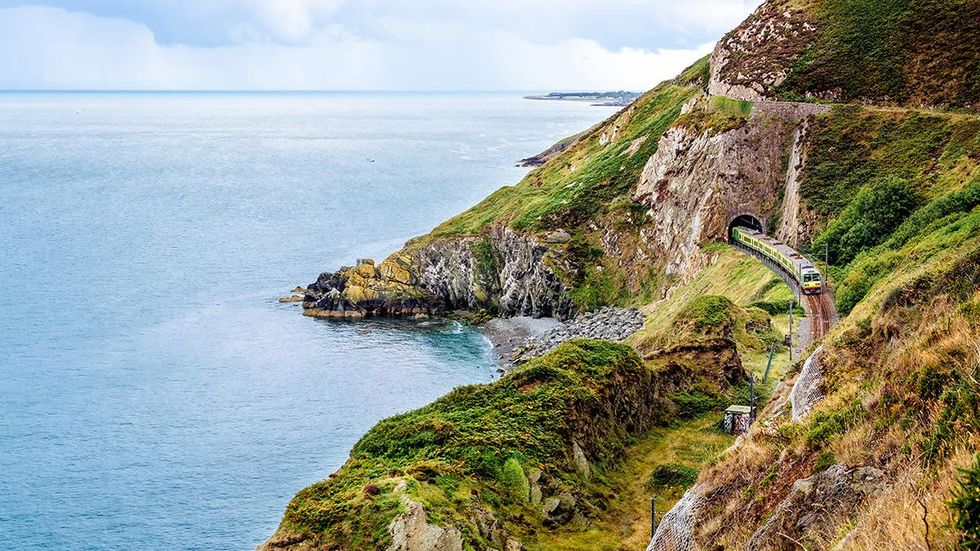
Brunel’s folly
PHOTO BY DAWID/ADOBE STOCK
Memorable views start the moment your 2.5-hour Irish Rail train leaves Connolly Station in Dublin city center and rumbles across the iron bridge spanning the River Liffey. Threading through the city's affluent southern suburbs, it’s not long before it skirts around the almost Mediterranean sweep of Killiney Bay to reach the seaside town of Bray.
But standing in its path is the massive bulk of Bray Head, where the Wicklow Mountains tumble directly into the Irish Sea. Never one to shirk a challenge when spending other people's money, legendary Victorian railway engineer Isambard Kingdom Brunel carved a narrow path through this formidable obstacle, where the mountains meet the sea, allowing the railway to reach Wicklow. Unfortunately, the exposed location and risk of rockfalls has left subsequent generations of engineers cursing “Brunel’s folly.” In fact, the current route isn’t even his original, which was closer to the cliff edge – leading a train to end up in the water.
Bray Head is just one high point of a superb journey rich with sweeping sea views, imposing mountains, lush and wooded valleys, and attractive small towns. Stop off to enjoy the excellent local food and pubs in Wicklow or Wexford, or continue to Rosslare, where you can catch a ferry to Wales, France, or even northern Spain.
If you’re lucky, you might even be able to experience the route from one of the superb “Sea Breeze” steam trains operated by the Railway Preservation Society of Ireland – the only trains in the world to serve pints of draft Guinness from the bar car.
Locarno to Domodossola – Switzerland and Italy
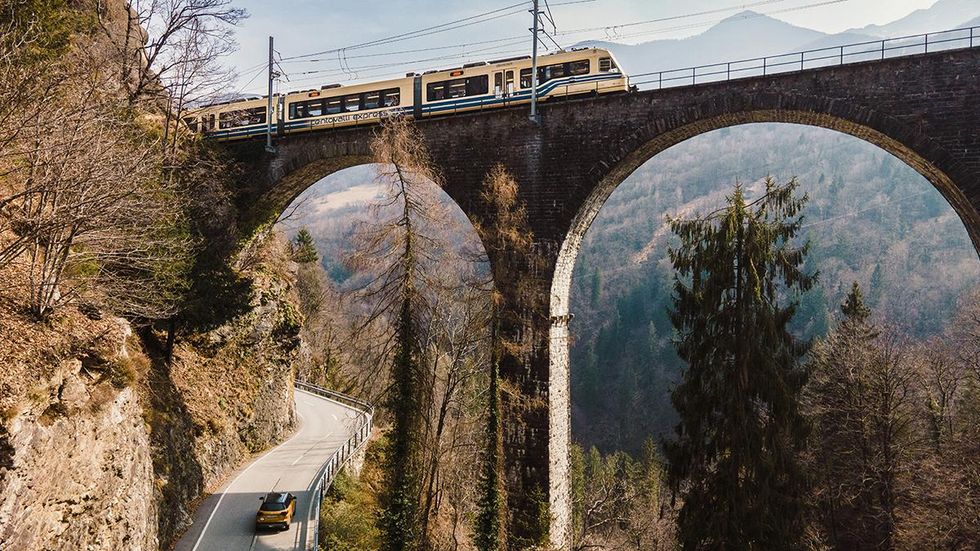
The Centovalli
PHOTO BY SARA DAEPP/FERROVIA VIGEZZINA-CENTOVALLI
Cutting across the grain of the landscape where the Swiss Alps interlock with northern Italy, this enjoyable trip really earns its “100 Valleys” billing. Compared to the iconic Bernina Express and Glacier Express routes further north, the Centovalli is somewhat overlooked – for no good reason.
Leaping across countless bridges spanning the river valleys that carry melting snow from the high Alps to the plains of Northern Italy, the Centovalli, which takes just under two hours, is one of the few trains running from east to west across the region. It provides a link between the Gotthard and Simplon Pass routes, which have been two of the key arteries for trade and travelers between northern Europe and Italy for centuries.
Starting from Locarno, a famous tourist town at the head of Lake Maggiore, Centovalli trains twist and climb through the wonderful pre-Alpine scenery of the Ticino region, passing waterfalls, quaint villages and rocky gorges before crossing the border into Italy and descending to the rail hub at Domodossola.
For a small supplement, it’s worth taking the tourist-oriented Treno Panoramico Vigezzo Vision, a special panoramic train with larger windows. One lucky passenger per trip even gets to sit alongside the driver for the ultimate scenic railway experience!
Even better, you can top and tail the route with other iconic rail experiences. If you start the day in Brig, you can take the iconic Glacier Express to Andermatt, and then the Gotthard mountain railway to Locarno. Finish off after your Centovalli trip by returning to Brig via the Simplon Tunnel line.
Bastia to Ajaccio – Corsica
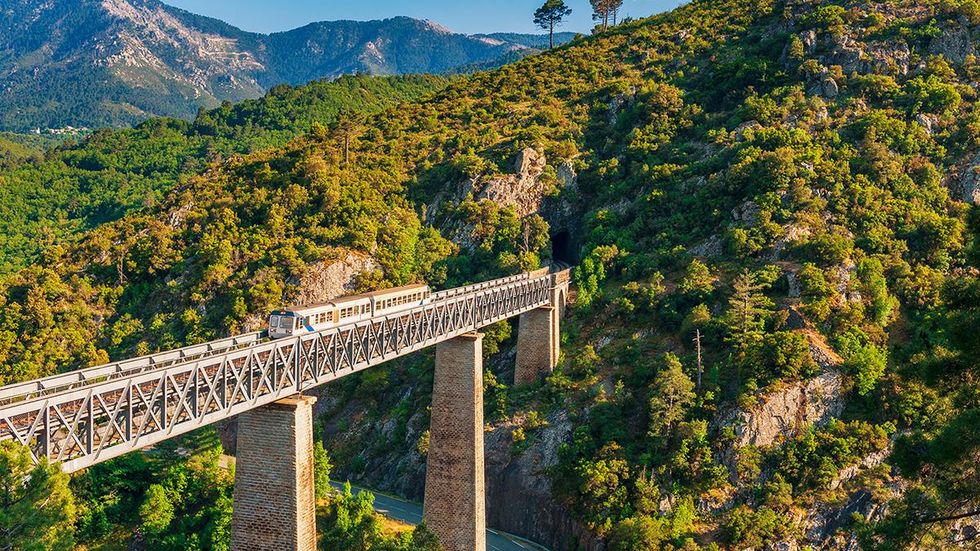
Vecchio Viaduct designed by Gustaf Eiffel of Eiffel Tower fame
PHOTO BY ALLARD1/ADOBE STOCK
Mountainous, sparsely populated, and thickly wooded, the Mediterranean island of Corsica isn't ideal territory for railways. What’s more, France’s minor railways were decimated in the mid-1900s. But against all the odds, in Corsica, three lines have survived.
Corsica’s challenging topography made life difficult for late 19th-century engineers and the 20,000 laborers who built the railway but created a unique experience for travelers. Jagged peaks, dense forests, waterfalls, unspoiled medieval villages, historic cities, golden sands, and sapphire blue coves await those willing to take their time and explore the island by train.
The network has 32 tunnels – the longest is 2.4 miles long, at an altitude of 2,972 feet – and 51 bridges, the most spectacular of which is the 308-foot high Vecchio Viaduct designed by Gustave Eiffel. Yes, that one – as well as his Parisian tower, Eiffel also designed some of Europe's finest railway bridges.
Weather-beaten meter-gauge trains, known as the Trinichellu or “Little Train,” radiate out from the inland hub at Ponte Leccia, trundling along the edge of beaches and towns to L’Ile Rousse and Calvi, providing handy transport for summer tourists.
The two other branches form the 98-mile “main” line from Bastia in the northeast via Corte to Ajaccio, Corsica's capital, on the southwest coast.
Despite several attempts to close the system, the Chemins de fer de la Corse (CFC) continues to operate five trains a day (four at weekends) between Bastia and Ajaccio, taking around four hours, as well as shorter trips on other routes. CFC doesn't have an official website but visitors can find all the information they need here.
Vienna to Trieste – Austria, Slovenia, and Italy
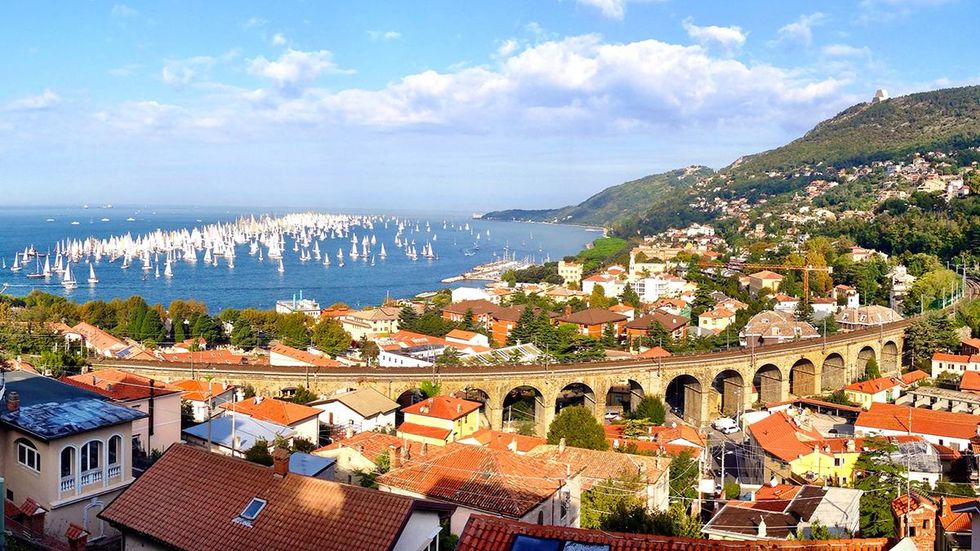
Trieste, Italy
PHOTO BY LUCARTS/ADOBE STOCK
Echoes of the Austro-Hungarian Empire are impossible to ignore on this nine-hour stroll through three countries and an ever-changing medley of landscapes. Once a day, ÖBB's EuroCity “Emona” train links Vienna with Ljubljana and the magnificent waterfront city of Trieste: the Austrian Empire’s principal port until 1918.
After negotiating the brutal inclines and sharp curves of the UNESCO World Heritage Semmering Line, the slow but comfortable train, complete with an excellent Slovenian dining car, heads via Graz to Ljubljana, threading the narrow gorge of the Sava River on its way to the Slovenian capital.
Continuing southwest, it winds through attractive farmscapes, climbing steadily to reach the Karst Plateau towards the Slovenian-Italian border, an unusual upland landscape where bare limestone is carved by wind and rain into underground rivers, gorges, and caves.
Saving the best for last, the train – by now reduced to just three coaches – descends dramatically after crossing the Italian border, screeching between limestone outcrops before emerging high on the mountainside to reveal stunning views of the Gulf of Trieste. Sit on the right-hand side of the train and look out for Miramare Castle, cantilevered over the water far below.
Heart of Wales Line – Wales
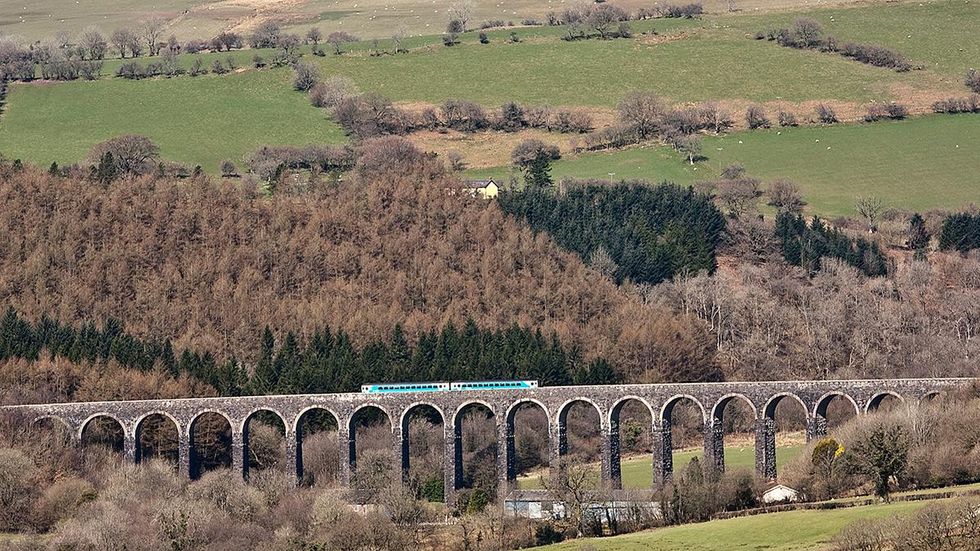
Welsh countryside
PHOTO BY NETWORK RAIL
The infamous “Beeching cuts” of the 1960s slashed back large parts of the British rail network, leaving many rural communities isolated – the effects of which are still being felt 60 years later. One of the worst affected regions was rural Wales, where many lines were abandoned.
A notable survivor is the meandering three-hour, 15-minute Heart of Wales Line, which links the English border town of Shrewsbury with Swansea in South Wales. Controversial closure proposals were refused by the U.K. government in the mid-1960s, not least because the line ran through no fewer than six marginal parliamentary constituencies.
That political decision continues to benefit a string of isolated rural communities along the 121-mile route, as well as tourists and hikers exploring this gloriously unspoiled region. Almost every stop offers great walks, not least the Heart of Wales Line Trail, which links many of the stations.
Just five trains a day make the complete trip (three on Sundays), trundling through a dramatic landscape of mountains, forests, wild rivers, green meadows, and pretty towns and villages. Highlights along the route include the attractive town of Llandrindod Wells and Llanwrtyd Wells – the smallest town in Britain and home to the World Alternative Games, featuring novel events such as bog snorkeling (snorkeling through a peat bog) and “wife carrying.”
Unusually, 22 of the 32 well-kept stations are request stops, where passengers need to inform the train crew or flag the train down. This adds to the quirky nature of the journey as you never quite know where the train will stop.
Clermont-Ferrand to Nîmes – France
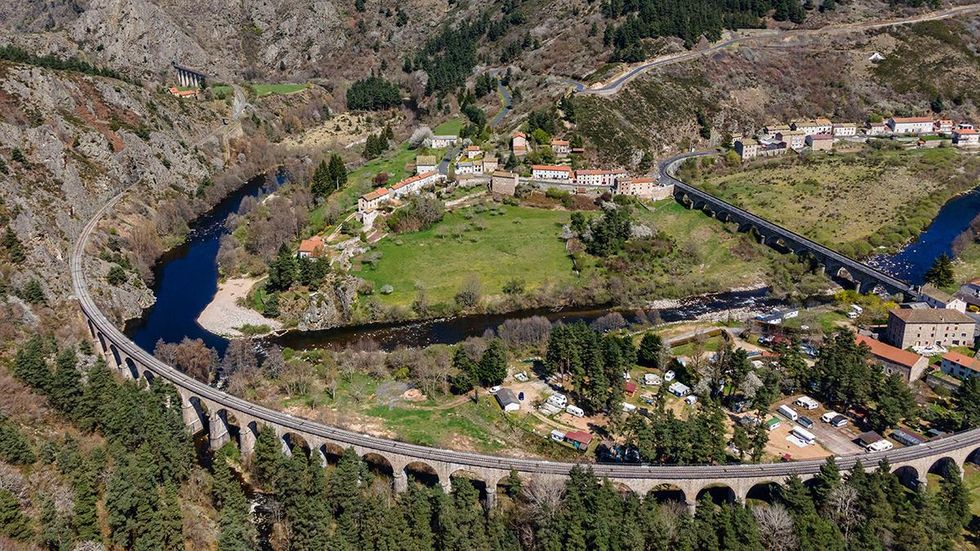
Countryside in southern France
PHOTO BY HERNIS/ALAMY STOCK PHOTO
France’s Massif Central lives in the shadow of the better known Alps and Pyrenees but this rugged highland landscape of mountains, extinct volcanoes, and plateaus is one of Europe’s best kept secrets. Two spectacular railways cross the region from north to south, winding through wild gorges and over high mountain passes.
Starting from Clermont-Ferrand, overlooked by the conical volcanic plug of the Puy de Dôme, trains on the Cevennes Line to Nîmes take around six-and-a-half hours to cover 190 miles, burrowing through 106 narrow tunnels and crossing almost 1,300 bridges in the process. France is famously blessed with many beautiful railway bridges, but the astonishing horseshoe viaducts at Chamborigaud and Chapeauroux are worth the trip alone.
The journey is a compelling mix of spectacular scenery and industrial architecture from a lost age. The summit of the line at La Bastide-Puy-Laurent, 3,635 feet above sea level, and has a confluence of historical hiking routes, including the Robert Louis Stevenson Trail which follows the route the writer and his donkey took in 1878.
South of the summit, the landscape becomes ever more Mediterranean as the line descends into the Languedoc, lined by Aleppo pines, cypress, and the region's world famous vineyards.
Until the 2000s, the line enjoyed direct “Cevenol” trains to Paris and Marseille and before that it even had a dedicated panoramic train, but both have now been consigned to history. Today, only local trains ply the route, tragically underselling what should be one of Europe’s greatest train journeys.
The-CNN-Wire
™ & © 2023 Cable News Network, Inc., a Warner Bros. Discovery Company. All rights reserved.




